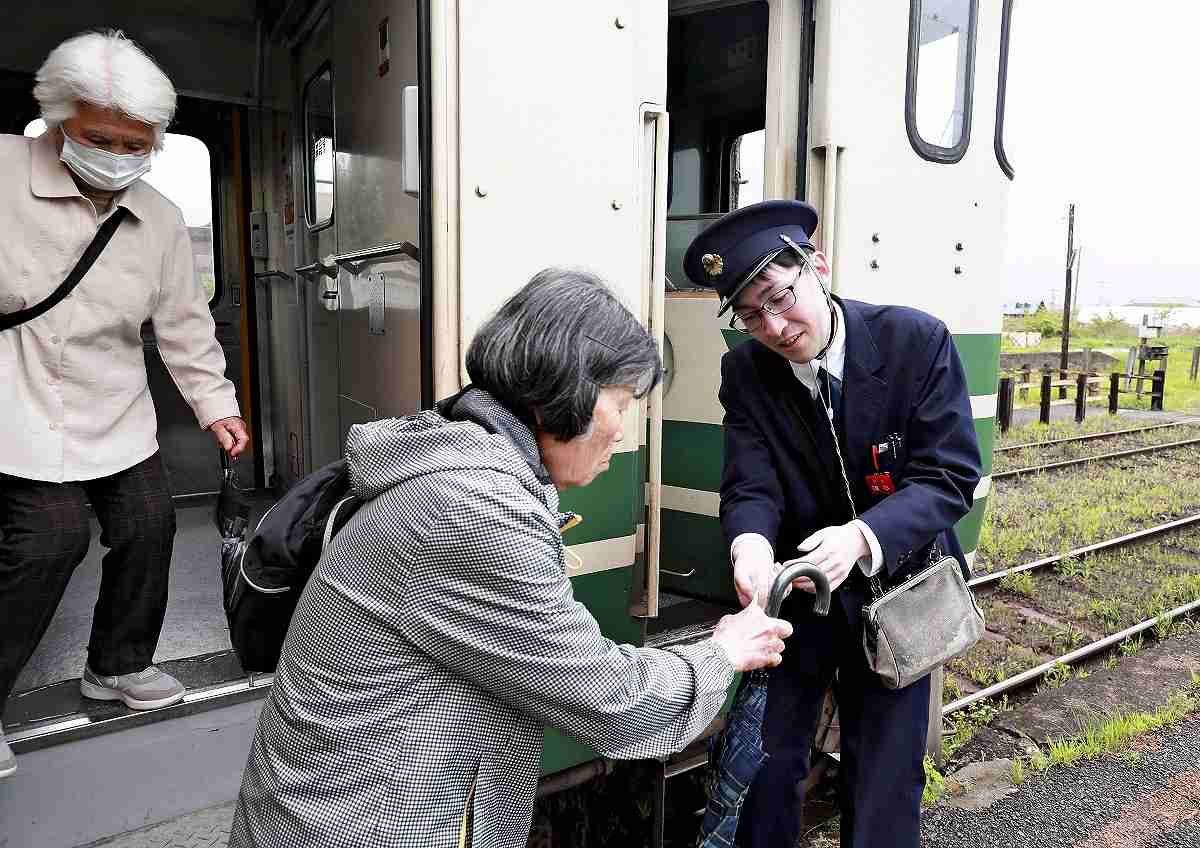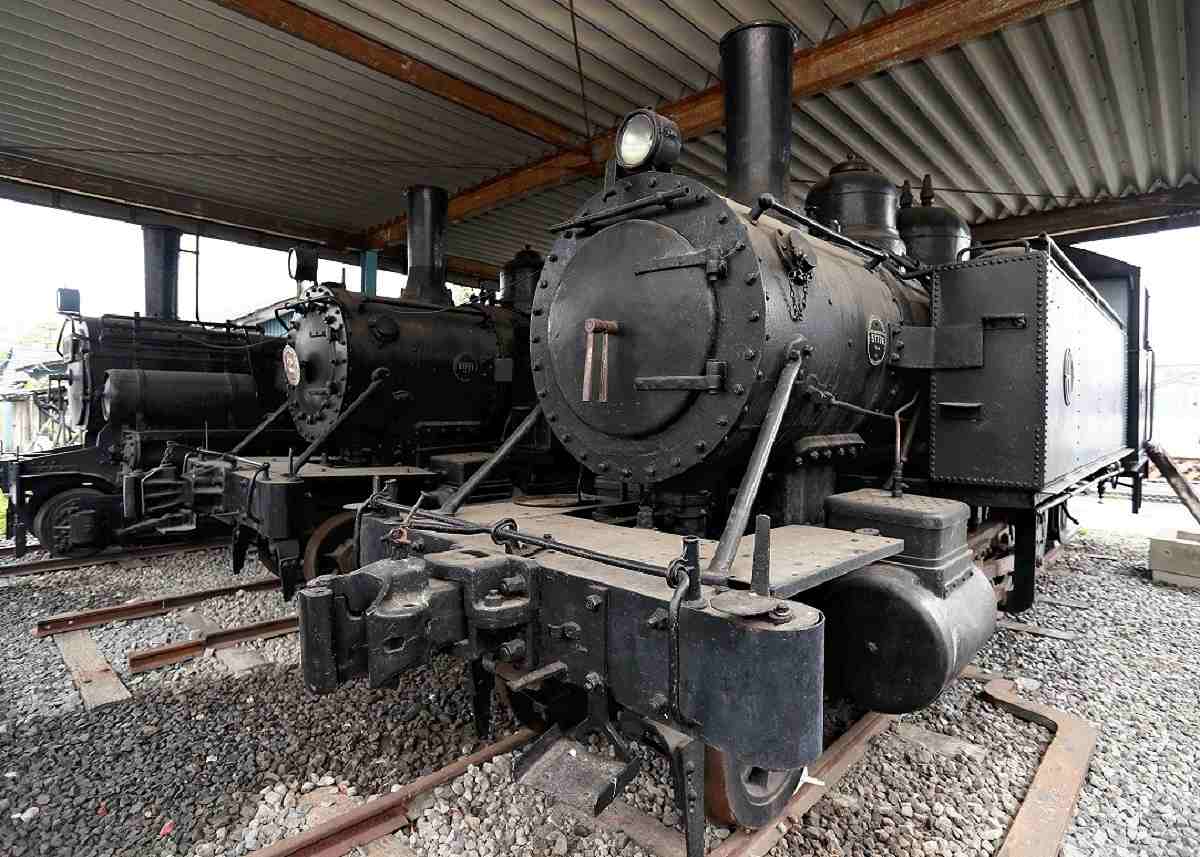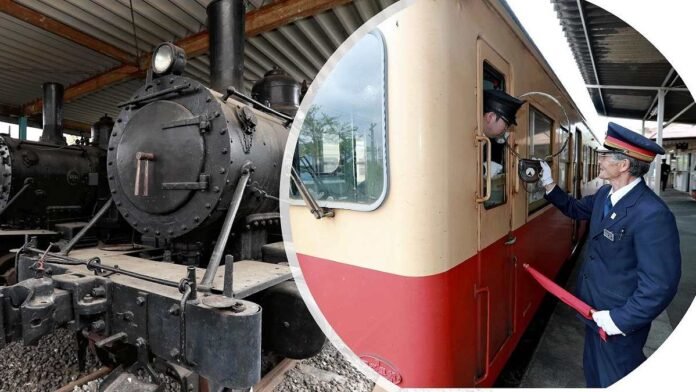Kunio Nagakura, right, the stationmaster of Kazusa-Ushiku station, receives a ring-shaped pass, a so-called “tablet,” from the driver of a Kominato Line train that has arrived at the station.
13:48 JST, June 17, 2024
‘I can still see it before my eyes: a Kominato Line train rolling click-clack through the landscape.’
These words were written by a nostalgic woman from Ichihara, Chiba Prefecture, in a letter to the Yomiuri Shimbun. Reading her letter inspired me to take a ride on a Kominato Railway train.

A paddy field with freshly planted rice seedlings can be seen from the window of a Kominato Line train.
On a calm, cloudy morning, a green-painted train, the first of the day, departs from Goi Station in Ichihara, Chiba Prefecture. As I sit for four in one of the traditional face-to-face seats, I look out the window at a rice planting machine moving back and forth through a rice field. Pheasants and their chicks huddle in the flooded field, full of newly planted rice seedlings, and the surface reflects clouds and roofs of houses.
“The appeal of it is that it is quite close to the center of Tokyo, yet rich in nature. Visitors can enjoy admiring the blooming hydrangeas along the tracks and watching fireflies fly around,” said Hiroya Hashimoto, 27, conductor of Kominato Line trains. He is a self-proclaimed train enthusiast who quit his job in another industry and started working for the railway company in April last year. Thirteen of the Kominato Line’s 18 stations are unmanned, so it is the conductor’s job to get off and collect tickets from passengers on the platform every time the train arrives at an unmanned station. While the train is moving, the conductor carries a large wallet with a kiss lock and walks around the train helping passengers who want to buy tickets.

A conductor receives a ticket from a passenger at one of the many unmanned stations on the Kominato Line.
The train takes about 30 minutes to arrive at Kazusa-Ushiku station. The station building built during the Taisho era (1912-26) is one of 22 structures on the Kominato Railway that were designated as tangible cultural properties by the government in 2017, the year of the company’s 100th anniversary. When the two-tone red and cream cars, so beloved by fans, come to a stop on the platform, the station master, Kunio Nagakura, 75, walks to the driver’s cabin and receives a ring-shaped object from the driver. It’s a kind of card, which they call the ‘tablet’.
The leather-covered metal ring has a diameter of approximately 30 centimeters. It is so worn that it had to be reinforced with fabric. There are two sections where the Kominato Line is only one track. To prevent collisions, a train may only pass through these routes if the driver has the tablet with him. Kominato is one of the few railways that still uses this type of pass system, alongside the Nagaragawa Railway in Gifu Prefecture and the Tsugaru Railway in Aomori Prefecture.
As the train starts moving, the conductor shouts from the back of the train to Nagakura, “Great job!” The stationmaster, who began overseeing the operation of the Kominato Line trains at the age of 20 and has done so for 55 years, continues the pointing and calling procedures until the train disappears from view.

Steam engines preserved in Goi Station
Kominato Railway

Kominato Railway, the operator of Kominato Line trains, was founded in 1917. Next year it will celebrate the centenary of its train services, which started in 1925. Service on the entire 39.1 kilometer route from Goi Station to Kazusa-Nakano Station started in 1928. The company initially planned to extend the route to Kominato in Kamogawa city (also in Chiba Prefecture), hence its use in the company’s name.



